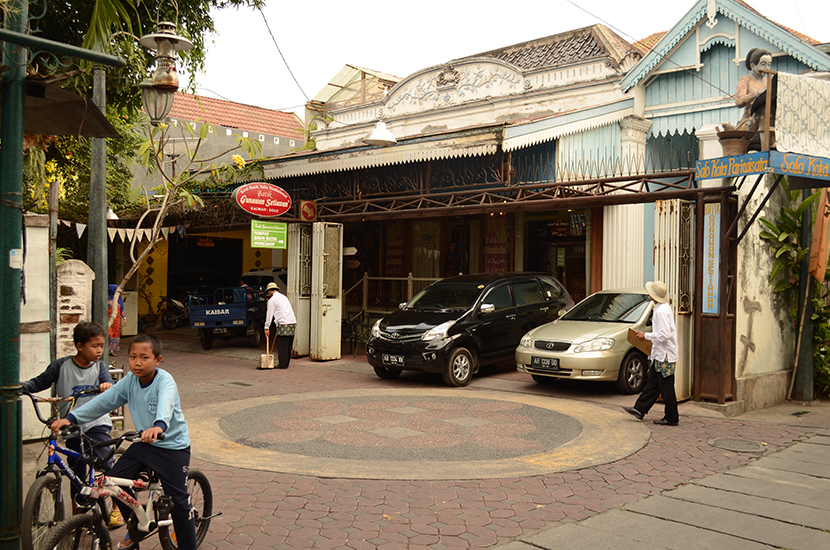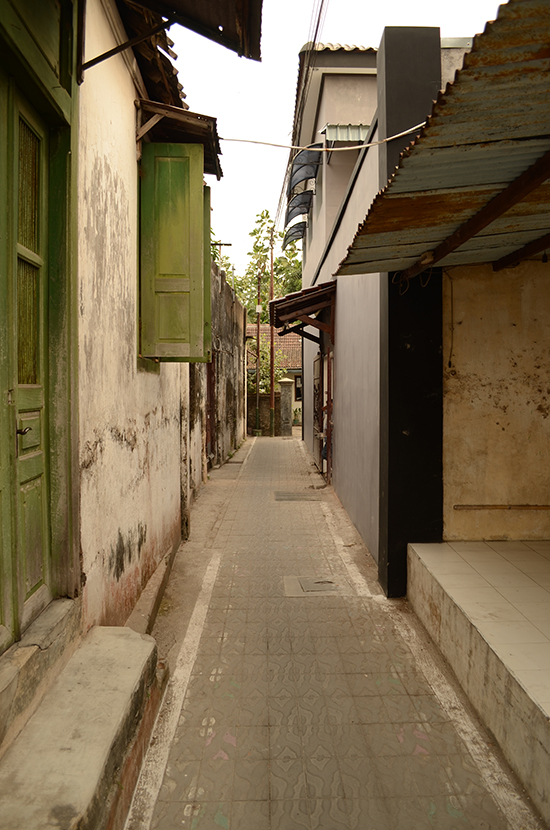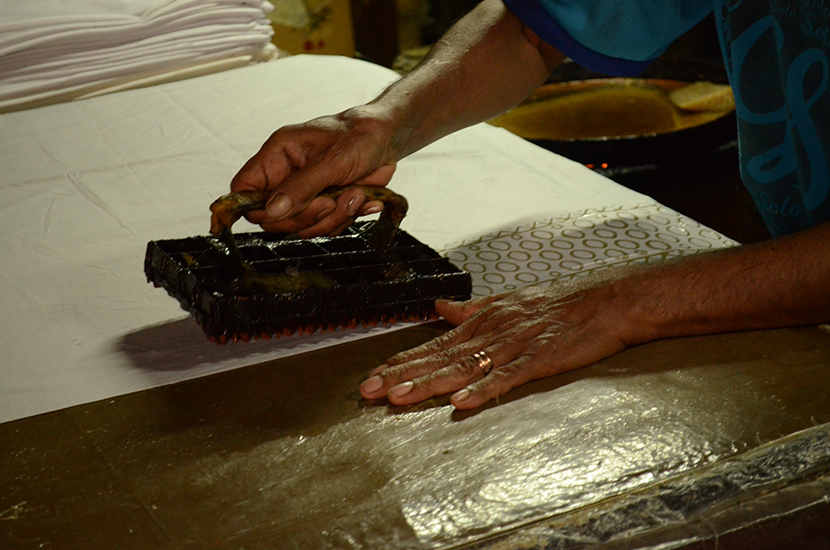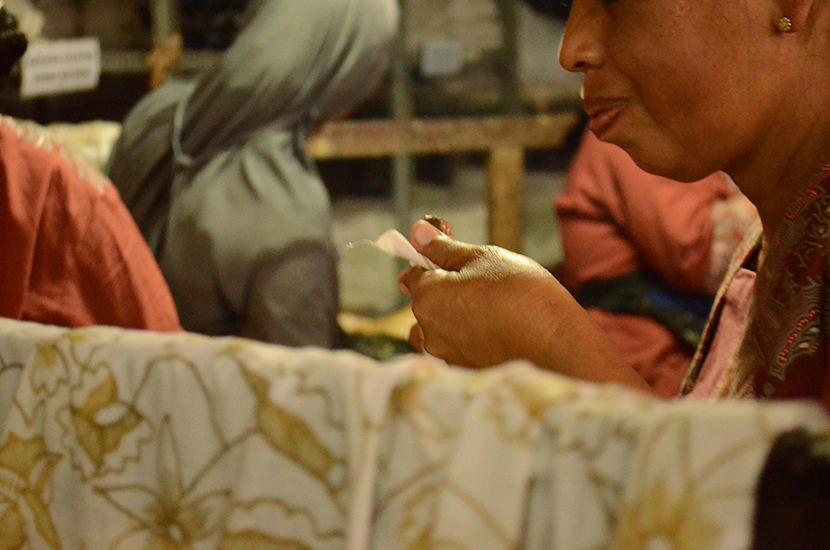How UNESCO’s Intangible Cultural Heritage program transformed the batik neighbourhood of Laweyan
Tod Jones
UNESCO’s Intangible Cultural Heritage (ICH) program should be a good fit for Indonesia. A nation-state containing over 300 ethnic groups, living on over 3000 islands (and some groups, like the Bajou, living on the waters between them) spread over 5000 kilometres is bound to exhibit a diverse and interesting set of cultural practices. The official story of Indonesia’s ICH program indeed is a celebration of diverse practices surviving and sometimes thriving within a national framework.
However the ICH program also raises a more important and interesting set of issues that have fascinated the most prominent scholars of Indonesia since World War II, from Clifford Geertz and Ben Anderson to Anna Tsing. How can we understand the processes that produce such a diverse set of practices, peoples and outcomes across Indonesia within constantly entwining and unifying political and economic systems? What does this mean for the people caught up in these processes and politics?
Batik and UNESCO
The ICH program is a set of connections linking decisions in Paris with programs and meetings in Jakarta and artisanal work and performance in houses, workplaces and venues across Indonesia. The ICH listing of batik, a handcrafted textile made by applying dots and lines of hot wax to cloth using a copper pen-like instrument (canthing tulis), or copper stamps (canthing cap) that resists hand dying, is a tale of the characteristics of culture and power in contemporary Indonesia.
New Factory in Kauman, Surakarta - Credit: Tod Jones
The Convention for the Safeguarding of Intangible Cultural Heritage (CSICH) was adopted by the UNESCO General Conference in 2003 and then entered into force on 30 April 2006. UNESCO defines ICH as:
the practices, representations, expressions, knowledge, skills – as well as the instruments, objects, artefacts and cultural spaces associated therewith – that communities, groups and, in some cases, individuals recognize as part of their cultural heritage. (Article 2.1)
UNESCO offered the carrots of three lists of global ICH to encourage engagement among nation-states (the most popular is the Representative List of the Intangible Cultural Heritage of Humanity). The requirements for signatory states of consultative listing processes, national ICH lists and national programs for listed ICH. There are now 167 nation-states signed up to the CSICH and 391 heritage practices on the Representative List.
Intangible Cultural Heritage in Indonesia
Indonesia enthusiastically responded to UNESCO’s ICH program. Indonesia successfully submitted two items to an earlier program in 2003 (Wayang Puppet Theatre) and 2005 (the Indonesian kris traditional dagger), became a signatory to the CSICH on 15 October 2007, and was a member of the Intergovernmental Committee for the Safeguarding of Intangible Cultural Heritage from 2010 to 2014. As you can see from the table below, the items listed by Indonesia are diverse in type and location.
Items listed by Indonesia on UNESCO’s Masterpieces (until 2008) and Intangible Cultural Heritage Lists
|
Year |
Item |
List |
|
2003 |
Wayang Puppet Theatre |
Masterpieces then Representative List (2008) |
|
2005 |
Indonesian Kris |
Masterpieces then Representative List (2008) |
|
2009 |
Indonesian Batik |
Representative List |
|
2009 |
Education and training in Indonesian Batik intangible cultural heritage for elementary, junior, senior, vocational school and polytechnic students, in collaboration with the Batik Museum in Pekalongan |
Best Safeguarding Practices |
|
2010 |
Indonesian Angklung |
Representative List |
|
2011 |
Saman Dance |
Urgent Safeguarding List |
|
2012 |
Noken multifunctional knotted or woven bag, handcraft of the people of Papua |
Urgent Safeguarding List |
|
2015 |
Three genres of traditional dance in Bali |
Representative List |
Before turning to the batik listing, we need to know why the Indonesian state chose to pursue ICH. The reasons are twofold. First, cultural policy was realigned from an affiliation with education to an affiliation with tourism. Second, and more importantly, cultural policy was one of a number of policy areas decentralised in 2002, devolving control of most the 70,000 strong cultural bureaucracy from the national to the provincial and district levels.
Canthing Cap in Kauman, Surakarta - Credit: Tod Jones
The ICH listings provided opportunities for the national bureaucracy to define their relationship as coordinating the different players required for a heritage listing. For instance, a discussion to progress the batik listing attracted representatives of the Indonesian Chamber of Commerce and Industry (KADIN), UNESCO, the Coordinating Ministry for People’s Welfare, Department of Trade, the Mayor of Pekalongan (a city that was investing in batik tourism), museums, and from a number of batik organisations. ICH initiatives also enable international connections – Japan funded three workshops (via UNESCO) on how to make lists, and a training program was attended by cultural bureaucrats from China, Japan and South Korea.
International ICH wars
Many of the listings have been in response to perceived affronts from Malaysia. The Balinese dance pendet appeared on a Malaysian tourism television commercial in 2009, triggering an angry response from Indonesia, including the accusation that the Malaysian national anthem was based on an Indonesian song. Disputes also occurred over shadow puppetry (wayang kulit), ceremonial daggers (kris), batik, bamboo orchestras (angklung) and the dance reog Ponorego. With the exception of the Malaysian national anthem and reog Ponorego, the items in dispute have all now been accepted for inclusion on ICH heritage lists as Indonesian heritage. The CSICH is a new front for nationalist cultural politics between neighbours whose colonial era boundaries were and still are porous. The two other practices listed are based in the most eastern provinces of Papua (noken woven bags) and most western province of Aceh (the saman dance ritual), replicating the geography of the Indonesian nationalist song, sang to the tune of La Marseilles, Dari Sabang sampai Merauke.
The impact of the batik listing
The listing of batik had a much greater impact than any of the other listings due to President Yudhoyono’s declaration of National Batik Day to coincide with inscription, and his encouragement of civil servants to wear batik on fridays. Subsequently, there was a shift in office then casual ware across Indonesia that has revived the batik industry. The batik fashion trend drove the most important set of impacts on the batik making community: the impacts of economic success on batik producing neighbourhoods (kampung batik). There are close links in batik neighbourhoods between economic independence, community networks, cultural practices and Javanese architecture (particularly with Javanese limasan houses).
Workers using Canthing Tulis in Kauman, Surakarta - Credit: Tod Jones
This brings us to Laweyan, established in 1546 as the first industrial cluster for cotton textiles. They became mass producers of batik during the Dutch colonial period with the invention of stamp batik. In 1930, there were 230 batik enterprises in Laweyan. However, following the deregulation of the Indonesian textile market in the 1970s, the entry of foreign printed fabrics, and changing fashions, only 10 enterprises were operating in 2003. In 2004, a group of Laweyan residents formed the Laweyan Batik Neighbourhood Development Forum (Forum Pengembangan Kampung Batik Laweyan) began to encourage local people to restart batik businesses. The Forum has been an important advocate to the state and international researchers and buyers, and for knowledge sharing. In 2011 there were 70 batik entrepreneurs in Laweyan.
The impact of the return of batik following the activities of the Forum from 2004 and the 2009 listings has been profound for Laweyan. There has been economic growth following a 30 year period of economic downturn, establishing a boom-bust-boom cycle similar to that needed for the creation of tourist-historic cities, and producing the same conflict between heritage and new infrastructure. Indeed new factories have entered to take advantage of the Laweyan brand, new houses have introduced modern styles into the neighbourhood, and the increasing number of tourists visiting have led to new outlets being built into the walls of compounds.
Understanding global heritage
Global heritage programs can have very different effects depending on the networks they activate and enliven. While all the listings benefitted the bureaucracy, most of the ICH listings did little for the practices that were listed. The revival of batik was unusual. Local communities require strong local organisations if they are going to capture these opportunities, which exist in batik villages. Furthermore, the absence of strong heritage regulations for the built environment will allow changes that undermine the experiences that tourists are seeking when they visit the batik neighbourhoods. While economic growth is beneficial and should be welcomed, the changes it generates should not undermine the cultural capital that is part of the basis of such transformations.
Tod Jones (T.Jones@curtin.edu.au) is a Senior Lecturer in Geography at Curtin University in Perth, Australia. His research interests are in Human Geography with a focus on heritage, cultural economics and cultural policy in Indonesia and Australia. His book, Culture, Power and Authoritarianism in the Indonesian State: Cultural Policy across the Twentieth Century to the Reform Era was published by Brill in 2013.



